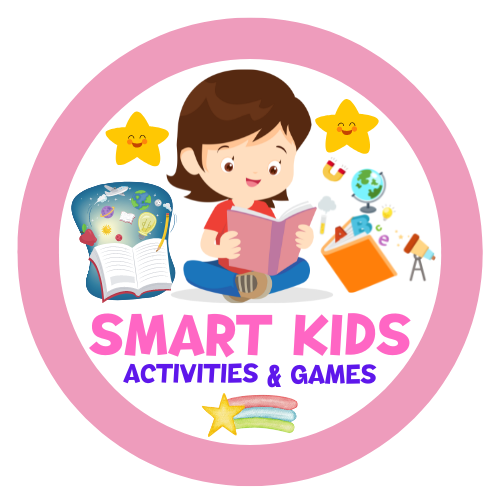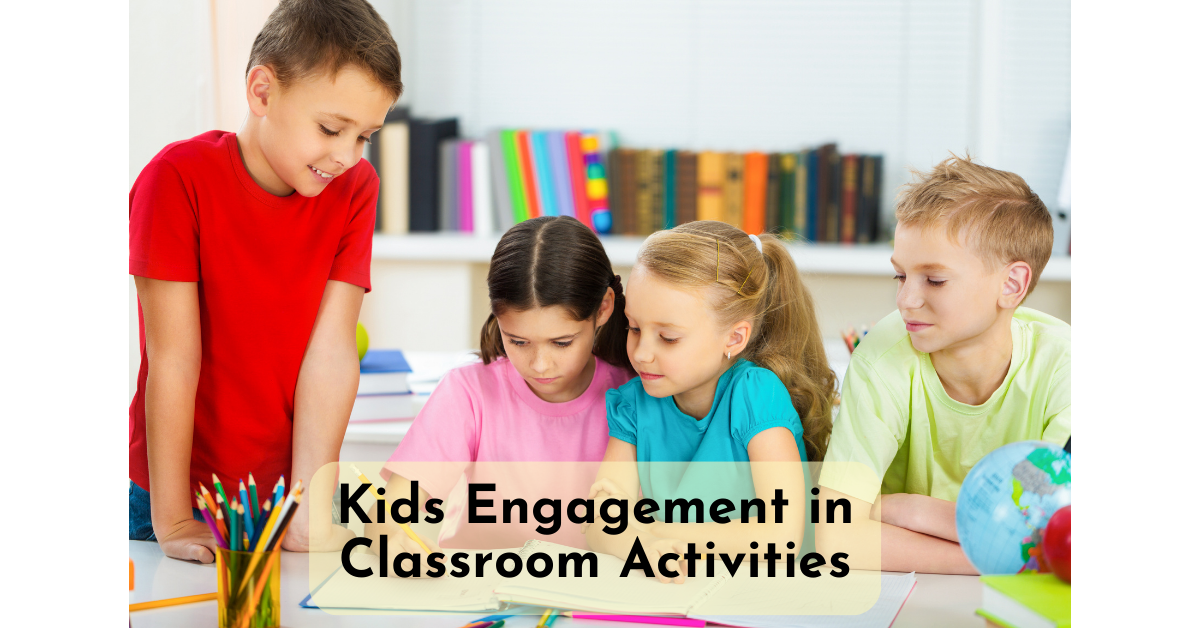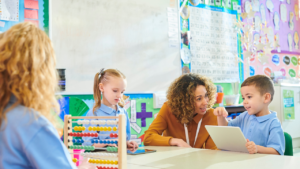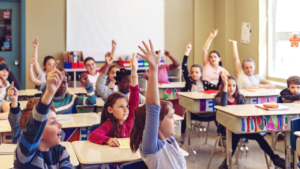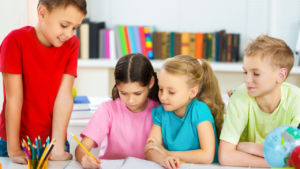Key Takeaways:
- Kids engagement in the classroom activities is crucial for their academic success and overall development.
- Active learning and active listening are key to boosting engagement.
- Strategies for eliminating dead time include creating routines and activities, using movement to get students focused, teaching collaboration skills, and implementing quickwrites for quiet time and reflection.
- Hands-on and cooperative learning experiences can enhance student engagement.
- Incorporating student-led activities and projects, designing engaging curriculum, and using interactive teaching methods enhance engagement.
The Importance of Kids Engagement in the Classroom
Engaging students in classroom activities is vital for their academic success and overall development. When students are actively engaged, they are more likely to retain information, develop critical thinking skills, and enjoy the learning process. By employing effective student engagement strategies, such as hands-on learning and cooperative learning, educators can create an environment that fosters active participation and positive learning outcomes.The Benefits of Hands-on Learning
One powerful strategy for promoting student engagement is hands-on learning. This approach allows students to explore concepts through direct experience, enabling them to apply theoretical knowledge in a practical context. By engaging in hands-on activities, students actively construct their understanding and develop essential problem-solving skills. Hands-on learning also enhances creativity, as students are encouraged to think innovatively and experiment with different solutions. For example:“Hands-on learning provides a unique opportunity for students to actively participate in their education and take ownership of their learning journey.”
The Power of Cooperative Learning
Cooperative learning is another effective strategy to boost student engagement. This approach involves collaborative group work, where students work together to achieve common goals. In a cooperative learning environment, students are actively involved in discussions, sharing ideas, and supporting one another’s learning. This not only enhances engagement but also fosters important social and communication skills. By working in teams, students learn to value diverse perspectives, collaborate effectively, and develop empathy. Cooperative learning can also lead to improved academic performance and increased motivation, as students feel a sense of collective responsibility.| Hands-on Learning | Cooperative Learning | |
|---|---|---|
| Definition | Engaging in direct, experiential activities to enhance understanding and problem-solving skills. | Collaborative group work where students work together to achieve common learning goals. |
| Benefits | – Develops critical thinking skills – Enhances creativity – Promotes problem-solving abilities | – Fosters social and communication skills – Encourages teamwork and collaboration – Improves academic performance and motivation |
| Example | Building a model of the solar system | Working in groups to solve a complex math problem |
Strategies for Boosting Kids Engagement
Engaging students is crucial for their academic success and overall development. By incorporating various strategies and techniques, teachers can create a dynamic and interactive learning environment that promotes student engagement and participation. Let’s explore some effective approaches:1. Student-Led Activities and Projects
Empowering students to take the lead in their learning can significantly increase engagement. By incorporating student-led activities and projects, teachers can tap into students’ interests and foster a sense of ownership. For example, students can be given the opportunity to research and present a topic of their choice, create multimedia presentations, or participate in group discussions where they can actively contribute their ideas and perspectives.2. Designing an Engaging Curriculum
A curriculum that is relevant and meaningful to students’ lives can greatly enhance engagement. Teachers can align learning objectives with real-world examples, incorporate hands-on activities, and use interactive resources that capture students’ attention. By making the curriculum relatable and interesting, students are more likely to be motivated and engaged in the learning process.3. Using Interactive Teaching Methods
Interactive teaching methods, such as technology integration, multimedia presentations, and real-time demonstrations, can make the learning experience more engaging and interactive. For instance, teachers can use educational apps, online resources, and interactive whiteboards to create interactive lessons that encourage active participation and exploration of concepts. The use of multimedia and visual aids can also help students better grasp complex ideas and retain information.| Benefits of Strategies for Boosting Kids Engagement | |
|---|---|
| 1. Increased motivation and enthusiasm for learning. | |
| 2. Better retention and understanding of concepts. | |
| 3. Development of critical thinking and problem-solving skills. | |
| 4. Improved collaboration and communication skills. | |
| 5. Creation of a positive and supportive learning environment. |
Creating a Positive Learning Environment for Engagement
In order to boost kids’ engagement in the classroom, it is essential to create a positive learning environment. Classroom management strategies, positive reinforcement, and student motivation all play a crucial role in fostering a supportive and engaging atmosphere.The Importance of Classroom Management
Effective classroom management is key to creating a positive learning environment. It involves establishing clear expectations and rules, as well as implementing consistent routines. This helps students feel safe and secure, enabling them to focus on their learning. By maintaining a calm and organized classroom, teachers can minimize distractions and create an environment that promotes engagement.Using Positive Reinforcement
Positive reinforcement is a powerful tool for motivating and encouraging students to actively participate in classroom activities. By acknowledging and rewarding students’ efforts and achievements, teachers can boost their self-esteem and confidence. This can be done through verbal praise, small rewards, or certificates of recognition. By recognizing and celebrating students’ engagement, they are more likely to continue engaging in the future.Fostering Student Motivation
Motivating students is essential for boosting their engagement in the classroom. Teachers can enhance student motivation by making the learning experience relevant and meaningful. Connecting the curriculum to real-world examples and students’ interests can help them see the value and importance of what they are learning. Additionally, providing opportunities for student choice and autonomy can empower students and increase their motivation to actively participate.| Classroom Management Strategies | Positive Reinforcement Techniques | Student Motivation Strategies |
|---|---|---|
| Establish clear expectations and rules | Acknowledge and reward students’ efforts | Connect curriculum to real-world examples |
| Implement consistent routines | Provide verbal praise | Offer opportunities for student choice |
| Create a calm and organized environment | Give small rewards or certificates of recognition | Make learning relevant and meaningful |
Personalizing Learning to Increase Engagement
Personalizing learning is a powerful approach to increase student engagement in the classroom. By implementing differentiated instruction and individualized learning experiences, teachers can tap into students’ unique interests, strengths, and learning styles. This not only allows students to have more autonomy and ownership over their learning, but it also fosters a sense of relevance and connection to the material being taught. When students feel that their learning experience is personalized, they are more likely to be motivated and engaged. By tailoring instruction to meet the individual needs of students, teachers can provide targeted support and challenge, ensuring that each student is appropriately challenged and supported in their learning journey.Benefits of Personalized Learning
Personalizing learning has several key benefits in terms of student engagement. Firstly, it promotes a student-centered learning environment where students feel valued and empowered. This shift in focus from teacher-centric to student-centric learning encourages active participation and collaboration among students. Additionally, personalized learning allows for greater flexibility and adaptability in the classroom. Teachers can utilize various instructional strategies, technologies, and resources to create a customized learning experience for each student. This helps to cater to different learning preferences and ensures that students are actively engaged in their own learning process.Personalized learning is not a one-size-fits-all approach, but rather a framework that empowers students to take ownership of their learning and pursue their passions and interests. It drives intrinsic motivation, promotes critical thinking, and prepares students for lifelong learning.
Implementing Personalized Learning
To implement personalized learning effectively, teachers can start by getting to know their students’ strengths, interests, and learning preferences. This can be done through informal conversations, interest surveys, and learning style assessments. Armed with this information, teachers can design learning experiences that allow students to explore topics that resonate with them and apply their learning in real-world contexts. Teachers can also provide students with choices and options in how they demonstrate their learning. This could include giving students the opportunity to choose their own projects, research topics, or methods of presentation. By allowing students to have a say in their learning, it increases their sense of ownership and engagement.| Benefits of Personalized Learning | Implementing Personalized Learning |
|---|---|
| 1. Promotes student-centered learning | 1. Get to know students’ strengths, interests, and learning preferences |
| 2. Encourages active participation and collaboration | 2. Design learning experiences based on students’ interests and real-world contexts |
| 3. Supports different learning preferences | 3. Provide choices and options for students in demonstrating their learning |
Incorporating Active Learning Strategies
Active learning strategies involve engaging students through hands-on activities, group discussions, and interactive exercises. By incorporating these techniques into lessons, teachers can create a dynamic and participatory learning environment that encourages students to actively engage with the material.Hands-on Activities
Hands-on activities are an effective way to promote active learning. These activities allow students to physically interact with the subject matter, making the learning experience more tangible and memorable. For example, in a science class, students could conduct experiments or participate in simulations to deepen their understanding of scientific concepts.Group Discussions
Group discussions provide students with the opportunity to share their ideas, opinions, and knowledge with their peers. This collaborative approach enables students to learn from one another and develop important communication and critical thinking skills. Teachers can facilitate group discussions by asking thought-provoking questions, setting clear guidelines for participation, and encouraging active listening.Interactive Exercises
Interactive exercises, such as games and quizzes, can make learning more engaging and enjoyable for students. These exercises provide immediate feedback and promote active participation, as students actively compete or collaborate to solve problems or answer questions. Educational apps and online platforms can be valuable tools for incorporating interactive exercises into the classroom.| Active Learning Technique | Description |
|---|---|
| Hands-on Activities | Engage students through physical interaction with the subject matter, promoting deeper understanding. |
| Group Discussions | Foster collaboration, critical thinking, and communication skills through peer interaction. |
| Interactive Exercises | Utilize games, quizzes, and educational apps to make learning interactive and enjoyable. |
Using Technology to Enhance Engagement
In today’s digital age, incorporating educational technology into the classroom can be a powerful tool for boosting student engagement. By leveraging interactive tools and online resources, teachers can create dynamic and exciting learning experiences that captivate students’ attention and foster a deeper understanding of the subject matter.Interactive Tools
One way to enhance engagement is by utilizing interactive tools that allow students to actively participate in the learning process. For example, educational apps can provide interactive quizzes, simulations, and games that make learning more enjoyable and interactive. These tools not only make the learning experience more engaging but also provide immediate feedback, allowing students to track their progress and make real-time adjustments to their learning strategies. Furthermore, interactive whiteboards and smart displays can transform traditional lessons by enabling students to interact directly with the content. Teachers can create interactive activities, such as drag-and-drop exercises or virtual manipulatives, that promote hands-on learning and encourage students to explore concepts in a visually stimulating way. This technology encourages active participation and collaboration, enhancing student engagement and knowledge retention.Online Resources
Another way to enhance engagement is by incorporating a variety of online resources. The internet offers a wealth of information and educational materials that can supplement classroom instruction and provide students with additional opportunities for exploration and discovery. Teachers can curate and share online articles, videos, and interactive websites that align with the curriculum and cater to students’ interests. This allows students to delve deeper into topics, conduct research, and gain a broader perspective on the subject matter. Additionally, online learning platforms and virtual learning environments provide opportunities for collaborative learning and interaction outside of the traditional classroom setting. Students can engage in discussions, complete online assignments, and participate in virtual group projects, fostering a sense of connection and community. This integration of online resources encourages self-directed learning and empowers students to take ownership of their education.| Benefits of Using Technology for Engagement |
|---|
| Enhances interactivity and active participation |
| Provides immediate feedback and progress tracking |
| Encourages hands-on learning and exploration |
| Offers a variety of supplementary resources |
| Fosters collaboration and community building |
Promoting Collaboration and Cooperation
In order to create a dynamic and engaging classroom environment, it is important to promote collaboration and cooperation among students. By encouraging cooperative learning strategies, such as group projects and peer interaction, teachers can foster a sense of teamwork and enhance student engagement.The Benefits of Cooperative Learning
Cooperative learning not only provides opportunities for students to actively engage with the material, but it also helps them develop important social and communication skills. Through group projects, students learn how to collaborate, compromise, and problem-solve together, building valuable life skills that extend beyond the classroom.“Together, we can achieve more than we can alone.”Group projects also promote a sense of ownership and responsibility among students, as they work together towards a common goal. This sense of shared purpose can greatly increase motivation and engagement, as students understand the value and impact of their contributions within the group.
Incorporating Peer Interaction
Peer interaction is another key aspect of promoting collaboration and cooperation in the classroom. By providing opportunities for students to work and interact with their peers, teachers can foster a supportive and inclusive learning environment. Teachers can encourage peer interaction through activities such as paired discussions, peer teaching, and group problem-solving. These activities not only allow students to learn from one another, but they also promote active listening and respect for different perspectives.Table: Benefits of Cooperative Learning
| Benefits | Description |
|---|---|
| Enhanced problem-solving skills | Cooperative learning encourages students to collaborate and think critically, leading to improved problem-solving abilities. |
| Increased motivation | Working in groups promotes a sense of belonging and motivation, as students work together towards a common goal. |
| Improved communication skills | Through peer interaction, students develop effective communication skills, both verbal and non-verbal. |
| Enhanced social skills | Cooperative learning provides opportunities for students to develop important social skills, such as teamwork, compromise, and empathy. |
Conclusion
Boosting kids’ engagement in classroom activities is crucial for creating a positive and effective learning environment. By implementing a variety of strategies, teachers can enhance student engagement and promote active participation and enthusiasm for learning. Active learning techniques, such as hands-on activities and group discussions, provide students with the opportunity to actively engage with the material, leading to improved retention and critical thinking skills. Personalizing learning through differentiated instruction and individualized experiences allows students to have more autonomy and ownership over their learning, increasing their motivation and engagement. Additionally, incorporating technology into the classroom can enhance engagement by providing interactive tools and online resources that make learning more interactive and engaging. Promoting collaboration and cooperation through cooperative learning strategies fosters teamwork and peer interaction, creating a supportive and collaborative learning environment. By combining these effective teaching strategies and classroom engagement techniques, teachers can create an atmosphere that encourages students’ active participation and enthusiasm for learning, ultimately enhancing their academic success and overall development.FAQ
What is dead time in the classroom?
Dead time refers to a lack of engagement in the classroom, where students are not actively involved in the learning process.
Why is student engagement important?
Student engagement is crucial for academic success and overall development as it promotes information retention, critical thinking, and enjoyment of learning.
How can teachers boost student engagement?
Teachers can boost student engagement by incorporating active learning strategies, using technology, personalizing learning experiences, and fostering collaboration and cooperation.
What are some strategies for creating a positive learning environment?
Strategies for creating a positive learning environment include establishing clear expectations, implementing effective classroom management strategies, and providing positive reinforcement.
How can personalized learning increase student engagement?
Personalized learning allows students to have more autonomy and ownership over their learning, which leads to greater motivation and engagement.
What are some examples of active learning strategies?
Active learning strategies include hands-on activities, group discussions, and interactive exercises that encourage students to actively engage with the material.
How can technology enhance student engagement?
Technology can enhance student engagement by providing interactive tools, online resources, and educational apps that make learning more interactive and engaging.
Why is collaboration important for student engagement?
Collaboration fosters teamwork and encourages students to engage with one another in a supportive and collaborative manner, promoting student engagement and participation.
What is the importance of boosting kids’ engagement in the classroom?
Boosting kids’ engagement in the classroom leads to a positive and effective learning environment that promotes student participation and enthusiasm for learning.
Download free activities and teaching resources Click Here
You may also be interested in
Exploring Modern Teacher Aids: Enhancing Classroom Success
Unlocking Learning Potential with Flipped Classroom Methods
Unlocking Potential: A Guide for Every Substitute Teacher
Empowering Future Learners with Early Childhood Education
Source Links
- https://www.3plearning.com/blog/20-student-engagement-strategies-captivating-classroom/
- https://www.edutopia.org/classroom-student-participation-tips
- https://www.commonsense.org/education/articles/tips-and-strategies-to-boost-student-engagement

